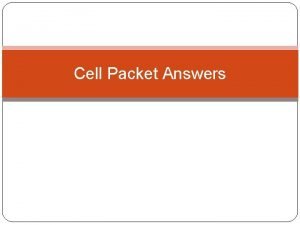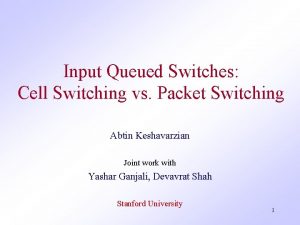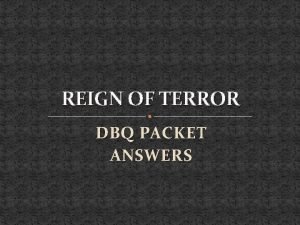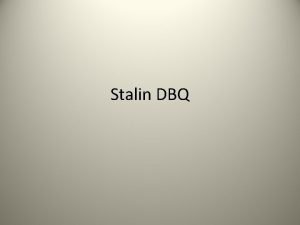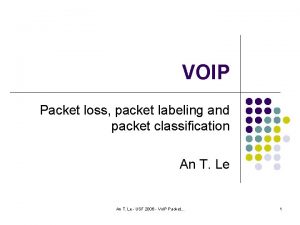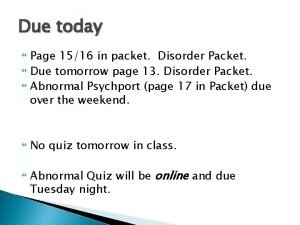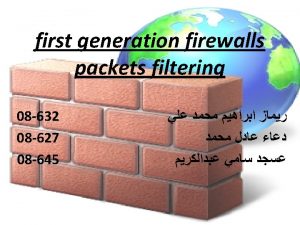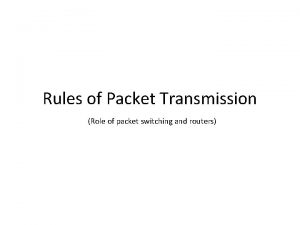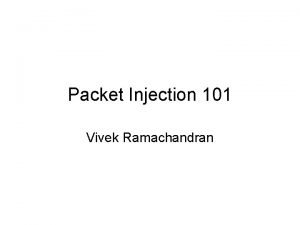Cell Packet Answers What is a cell The


















- Slides: 18

Cell Packet Answers

What is a cell? • The smallest unit that can perform all life processes. • A cell is a membrane covered structure that contains all of the materials necessary for life. • Most cells are too small to be seen with the naked eye. 11/23/2020

Why are cells important to life on Earth? All living things are made of cells, so if there were no cells, there would be no living things.

What does it mean for an organism to be single-celled? In an organism made up of only one cell, different parts of the cell perform different functions. 04/17/09

What does it mean for an organism to be multicellular? Some organisms are made up of trillions of cells. In an organism with many cells, different kinds of cells perform specialized functions. 04/17/09

What are three examples of single-celled organisms? Paramecium, Amoeba, Rotifer, Euglena, Bacteria

What are three examples of multicellular organisms? Human, Oak Tree, Tulip, Fish, Dog, Bear

How are bacteria cells different from plant or animal cells? These cells are simple in structure. Bacteria lack a nucleus and other membrane-bound organelles. They exist as single-celled organisms. Unlike animal and plant cells, bacteria have pili, flagella, and most have a cell capsule. Bacteria can be both helpful and harmful to us and the environment. 04/17/09

04/17/09

Animal Cell Plant Cell 04/17/09

Explain the major differences between plant and animal cells: A plant cell has a cell wall, animal cells do not. A plant cell has chloroplasts, animal cells do not. A plant cell has a large vacuole, an animal cell has smaller vacuoles.

Cell Membrane A protective barrier that encloses a cell. It separates the cell’s contents from the environment. The outermost structure in cells that lack a cell wall. In cells that have a cell wall, the cell membrane lies just inside the cell wall.

Cell Wall A rigid structure that gives support to a cell. The cell wall is the outermost structure of a cell. Plants and algae have cells walls.

Cytoplasm The fluid inside a cell, where organelles are found.

Nucleus A large organelle that contains the cell’s DNA, or genetic material. Sometimes called the control center of a cell.

Chloroplast Organelles in plant and algae cells in which photosynthesis takes place. Chloroplasts are green because they contain chlorophyll. Photosynthesis is the process by which plant cells make food.

Mitochondria is the organelle in which sugar (food) is broken down to produce energy. Mitochondria are sometimes called the power house of the cell.

Vacuole A vacuole is a large vesicle that stores water and other liquids. A plant cell has a large vacuole, animal cells have smaller vacuoles.
 Cell packet
Cell packet Cell switching vs packet switching
Cell switching vs packet switching Packet switched network vs circuit switched
Packet switched network vs circuit switched Cell switching vs packet switching
Cell switching vs packet switching Touching spirit bear study guide
Touching spirit bear study guide Dbq 11 absolutism and democracy
Dbq 11 absolutism and democracy Dbq reign of terror answers
Dbq reign of terror answers Christmas carol study guide
Christmas carol study guide Spanish 1 answer key
Spanish 1 answer key Spanish 2 final exam review packet
Spanish 2 final exam review packet Sexual reproduction
Sexual reproduction What does dbq stand for
What does dbq stand for Hát kết hợp bộ gõ cơ thể
Hát kết hợp bộ gõ cơ thể Bổ thể
Bổ thể Tỉ lệ cơ thể trẻ em
Tỉ lệ cơ thể trẻ em Voi kéo gỗ như thế nào
Voi kéo gỗ như thế nào Chụp phim tư thế worms-breton
Chụp phim tư thế worms-breton Hát lên người ơi
Hát lên người ơi
